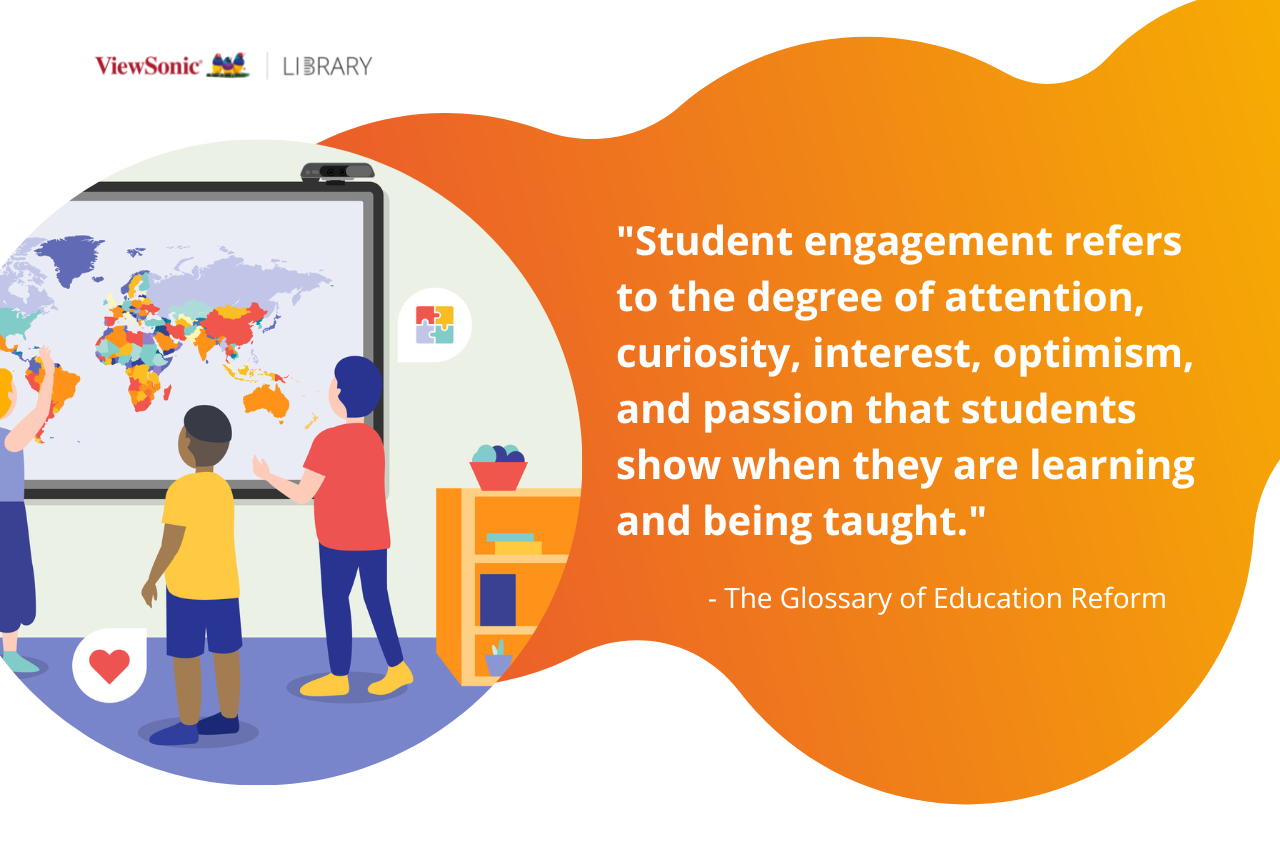Most teachers and experts would state that student engagement is mandatory for learners to fulfill their potential, but actually measuring student engagement has always been tricky. Aside from asking students to assess their own levels of engagement — a perfectly valid process, albeit one which is influenced by bias — measurement has often relied upon the perception of teachers or outside observers. Of course, these perceptions can also be flawed.
Thankfully, digital technology, or EdTech, has helped to change this, offering ways to gain a much more accurate sense of how engaged students are. Read on to find out how, or choose to learn about myViewBoard Sens and other ViewSonic’s Education Solutions.
It is widely accepted that the higher the level of student engagement, the better. But what exactly is student engagement? The Glossary of Education Reform, which was created by the Great Schools Partnership, uses the following definition for student engagement: “the degree of attention, curiosity, interest, optimism, and passion that students show when they are learning and being taught.” Yet, actually measuring student engagement has traditionally been a challenge. After all, simple observation makes it difficult to accurately quantify their level of engagement, and teachers or other observers can easily miss signs of disengagement.
Fortunately, modern EdTech had helped to not only make measurement much easier but also much more reliable too. This is especially true when it comes to artificial intelligence, virtual assistants, and student-centered insight technology, which can all help educators to easily detect signs of engagement or disengagement.
Student-Centered Insights
One of the most exciting digital technology trends that are helping teachers with the task of measuring student engagement is student-centered insight technology. In fact, the myViewBoard software platform provides educators with the necessary information to understand and respond to students’ needs, based on non-verbal cues.
The technology uses sensors, typically positioned at the front of the class, which are able to detect not only faces within the room but the expressions on those faces and what those expressions mean. This then equips educators and academic institutions with the ability to identify, understand and respond to learners’ emotional states.

With such technology in place, teachers will be able to identify the level of engagement that exists within their class and even identify specific points in time when facial expressions suggest dips or spikes in engagement. This can then allow educators to adapt to their students’ needs and adjust their lessons accordingly, either in the moment or in the future.
Virtual Assistants
Artificial Intelligence and virtual assistants within education can play a role in helping to measure how engaged students are in a class.
The data that can potentially help educators better understand student engagement includes the number of clicks per user, or the number of words typed. Classroom attendance can be tracked over time, as can the various students who volunteer answers during a discussion.
This data can then be uploaded to the cloud and, using virtual assistants, comparisons can be made with other similar classes, lessons, or schools. For example, myViewBoard Sens is an AI powdered hardware and software solution to help measure student engagement and classroom environment and provide real-time insights. myViewBoard Sens harnesses the power of data to improve learning outcomes to optimize schools for the best possible learning outcomes. These insights can allow educators to consider how their students’ data compares to others. Changes can then be made to the teaching methods used or the structure of the class.
Asynchronous Learning
Some students may need to engage in asynchronous learning, with virtual assistant technology helping teachers identify signs of disengagement beyond student-centered insights, including eye-tracking and body language. In the future, wearable technology and smart devices may also provide educators with access to heart rate data and other similar information, making this process incredibly scientific, but also incredibly accurate.
Virtual assistant technology solutions, such as myViewBoard Sens could also suggest what needs to be done to improve the quality of a lesson or give insight into the types of strategies and techniques that have boosted engagement levels elsewhere.
Student Engagement Surveys
Course evaluations have been a mainstay within student engagement measurement, and these will often take the form of student surveys. However, they are not a foolproof method, as they often occur at the end of a course. This means that students have to recall how they felt, rather than answering at the moment. It also means students may feel a sense of relief that a class is over, resulting in them giving overly generous responses.
At the same time, student surveys are one of the few ways in which engagement is measured by actually asking students for their thoughts. The value of this insight could potentially be increased through the use of digital technology.
For instance, classroom management software packages and audience response systems may include options for surveys or allow teachers to run instant polls. These surveys and polls can be anonymous, in order to encourage students to share their true feelings, and this provides instantaneous feedback. Alternatively, anonymous surveys can be sent out digitally at the end of each lesson. What’s more, integrating engaging games that can be played on the whiteboard will boost student engagement.
Final Thoughts
In the past, measuring student engagement has primarily centered around perceptions, whether from students or classroom observers. However, with the rise of technology like facial expression recognition and virtual assistants, it is now possible to gain a much more accurate insight into whether students are focused, entertained, enthused, and intrigued.
If you’d like to learn more about how to use technology to boost student engagement, check out our complete guide on technology in the classroom.